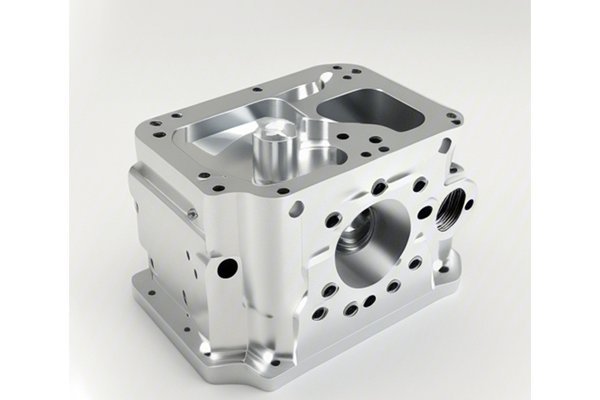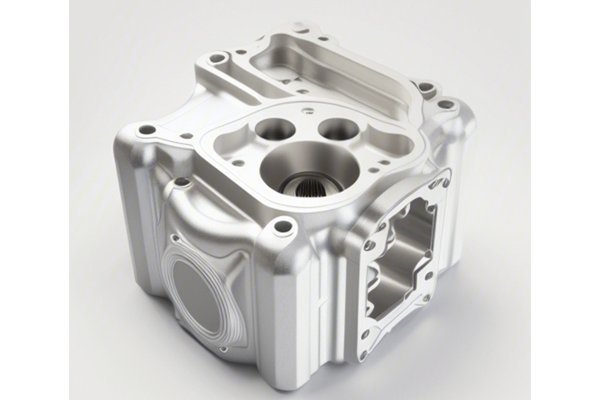Opening
Did you know that a mere 1% increase in material defects can lead to a staggering rise in production costs, sometimes exceeding 5% of total expenditures? For CNC machining operations, this statistic underscores a critical challenge in the manufacturing world: material imperfections. These defects can severely compromise part quality, production efficiency, and ultimately customer satisfaction. But what exactly are these defects, and how do they influence CNC machining processes?
In this comprehensive guide, we’ll explore the intricate relationship between material defects and CNC machining quality. We will delve into types of material defects, their impact on production, and effective strategies for detecting and mitigating these issues.
Understanding the Types of Material Defects
Before we discuss the implications of material defects, we need to understand what constitutes a defect in the context of CNC machining. Material defects can broadly be classified into the following categories:
These include issues like cracks, voids, and inclusions. They can occur during the manufacturing of materials or may develop over time due to factors such as stress or environmental conditions. Cracks can propagate during machining processes, leading to unexpected failures, while voids can result in weak areas in finished products.
Metallurgical inconsistencies such as over-alloying or inadequate quenching processes can lead to changes in the chemical composition of metals. This affects their properties—strength, ductility, and corrosion resistance.
Misalignment, out-of-round conditions, or deviations in size from specified tolerances fall under this category. Such defects can lead to difficulties in part assembly and function, thus compromising the final product.
These include rough finishes, burrs, and scratches on machined surfaces. They can affect friction and wear properties and are especially crucial in parts requiring precision and aesthetics.
These relate to the material’s ability to withstand physical stress. Weakness in mechanical properties can lead to premature failure under load.
The Impact of Material Defects on CNC Machining
Material defects pose significant challenges for CNC machining. Here’s an in-depth look at how they affect machining quality and production outcomes:
Defects can result in unexpected machine downtime. If a defect is detected during machining, the process may need to be halted for inspection, evaluation, and often rework or reprogramming, leading to significant delays.
Machining parts with material defects can lead to increased scrap rates. Parts may require rework or be scrapped entirely if they fail to meet quality standards, which directly impacts production costs.
Material defects can lead to abnormal tool wear and breakage. For instance, harder inclusions can quickly degrade cutting tools, leading to increased maintenance costs and hindering production speed.
Ultimately, defects compromise the performance and durability of machined parts. This can lead to catastrophic failures in critical applications, reducing customer trust and satisfaction and potentially incurring warranty claims or recalls.

All of the above ultimately lead to increased operational costs. Delays, quality control measures, scrap materials, and warranty issues can waste resources and affect profitability.
Strategies for Managing Material Defects in CNC Machining
Proactively managing material defects is essential for maintaining high-quality production and optimizing operational efficiency. Below are several effective strategies.
a. Non-Destructive Testing (NDT)
Implementing NDT techniques can help identify defects without damaging the material. Magnetic particle testing, ultrasonic testing, and eddy current testing are just a few methods that can uncover surface and subsurface defects.
b. Chemical Analysis
Regular materials testing through techniques like spectroscopy can ensure materials meet specified compositions and are free from harmful anomalies.
c. Supplier Quality Assurance
Working closely with material suppliers can establish stringent quality assurance practices, ensuring that all incoming materials are within acceptable tolerance ranges.
a. Adaptive Control Systems
Utilizing adaptive control systems that automatically adjust machining parameters in real-time can mitigate the impact of defects on operations. These systems can manage variables such as feed rate and cutting speed based on real-time feedback from the machining process.
b. Cutting Tool Selection
Choosing the right tools based on the material can minimize the effects of defects. Using tools designed to handle hard inclusions or complex geometries can prevent premature wear and increase efficiency.
Frequent machine maintenance and calibration can ensure the CNC machine operates at optimal performance. Regularly scheduled inspections and adjustments can help catch potential issues before they become significant problems.
Investing in employee training to educate staff on defect recognition and mitigation strategies can enhance the overall quality of production. Lean manufacturing practices, focusing on reducing waste and optimizing processes, can further improve operational efficiency.
Using sophisticated software for simulation and predictive analysis can forecast potential defects and performance issues long before they manifest in the production environment. This proactive approach can help manufacturers adapt production schedules and methods accordingly.
As we’ve discussed, managing material defects effectively is pivotal for CNC machining quality and production outcomes. By recognizing the types of defects and understanding their impact, manufacturers can implement targeted strategies to mitigate their effects. This not only preserves the integrity of machined parts but also enhances production efficiency and cost-effectiveness.
In an industry that demands precision, understanding the nuances surrounding material quality is crucial. The significance of this topic extends beyond mere operational aspects; it encompasses the very foundation of customer trust and satisfaction. Therefore, manufacturers must continuously evaluate their processes and adopt practices that ensure high-quality outputs.
As you reflect on the content of this blog, remember that attention to material quality is not just a technical issue—it is central to sustaining competitive advantage in the dynamic landscape of modern manufacturing. Engaging with the complexities of material defects and proactively addressing them is essential for any CNC machining operation aiming for excellence.






